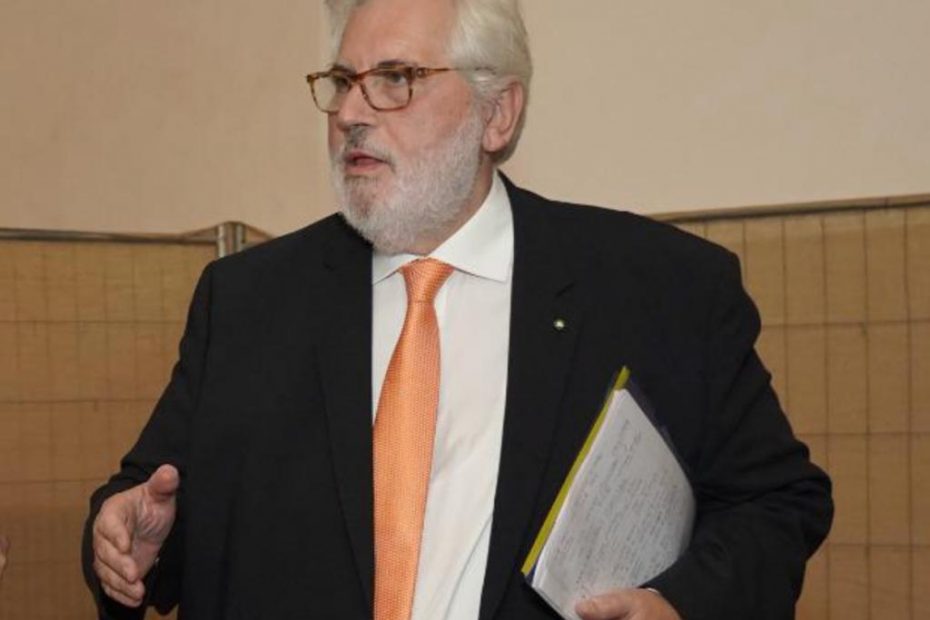“The idea of Pope Pius V combined with the basilica of Santa Croce exalts the essential concreteness to subsidize culture”: the acute incipit by Fabrizio Palenzona (president of the CRT Foundation) is booming on the audience gathered at the last general assembly of Confindustria Alessandria set up at the sixteenth-century monastery in Bosco Marengo to reconfirm the president of the trade association.
“Pius V – it was asserted by the Novese banker – was the only Pope elevated to holiness over six centuries. The magnificence of Pius V is witnessed by the global initiatives implemented to preserve the Catholic culture already undermined by the lascivious Borgia family ascended to the apostolic palaces and the papal throne and then by Lutheran Protestantism”.
The convulsive era for the Church was extended from the Enlightenment hostile to Christianity. The Peace of Tolentino (17 February 1797) concluded by General Napoleon Bonaparte and Pope Pius VI (born Giovanni Angelo Braschi and died in exile in Valence-sur-Rhone) weighed down the Treaty of Bologna (23 June 1796)The furious Italian Campaign on the artistic heritage of churches and convents is evident on the clause to transfer one hundred priceless masterpieces to France added to the war indemnity. The epic triumph of Napoleon in Marengo (14 June 1800) extended the raid on Italy: the Primo Cònsole had intuited the credit of arts and sciences transmitted to the illicit revolutionary regime and, Thus, he had joined to the peace treaties the ingenious system of clauses on the achievements of art.
The structure of vigilance extended to the entire papal soil led by the cardinal camerlengo together with the Commissioner for Antiquities and the Inspector General of Fine Arts was the administrative novelty promoted by the Chirograph (1 October 1802) written by Pope Pius VII (born Gregorio Chiaramonti). This innovative decree was taken up by the Lex Pacca: the collection of 61 articles written by Cardinal Bartolomeo Pacca and approved (7 April 1820) by Pope Pius VII was the first comprehensive code to manage the pontifical cultural heritage.
“Michele Ghislieri – it was asserted by the expert speaker – was the strict guardian of faith also moved by humble origin and inclined to assimilate sovereigns and coadjutors to men eager to embrace the Catholic religion. The Inquisition was promoted by Pope Pius V to reduce popular superstition. The Counter-Reformation devised at the Tridentine Ecumenical Council succeeded to the pontiff moved by the cultural and theological character. The Holy League (1571) was the military alliance of European Christian countries gathered by the illustrious Boschese to disperse the Turkish fleet at the Battle of Lepanto: the triumph was crucial to curb the spread of Islamic culture on the old continent. Europe is still disunited: the sectarianism of every state is evident in opposition to the Russian-Ukrainian crisis”.
The passionate contribution was also made on the local scene.
”La convivenza di cento monaci al convento domenicano di Santa Croce – è stata la chiosa di Fabrizio Palenzona – è fluita sull’area attigua già costellata dalla catena di poderi: la rete di canali irrigui costruita per soddisfare altresì la struttura religiosa è stata proficua per favorire l’agricoltura e produrre le vivande di origine animale. Qui l’imprenditorialità di Pio V è mirata a proiettare la sostenibilità economica e ambientale sull’urbanistica. La mappa custodita agli archivi vaticani esprime la volontà di situare il monastero al centro di Bosco e Frugarolo per offrire il simbolo identitario ai due paesi”.
L’abolizione di ordini monastici decisa dal Primo Impero francese conduceva 400 veterani dalle battaglie napoleoniche al monastero cinquecentesco: l’attività organizzata e prolungata di risorse umane è stata essenziale per trasmettere lo scrigno depositario di cultura al secolo XXI. Il modello efficace e rodato dalla storia è contrapposto al mecenatismo pubblicitario e agli eventi costretti dalla futuribilità esigua o disconnessi dalla sacralità di santuari superstiti al ciclo di quattro secoli.
